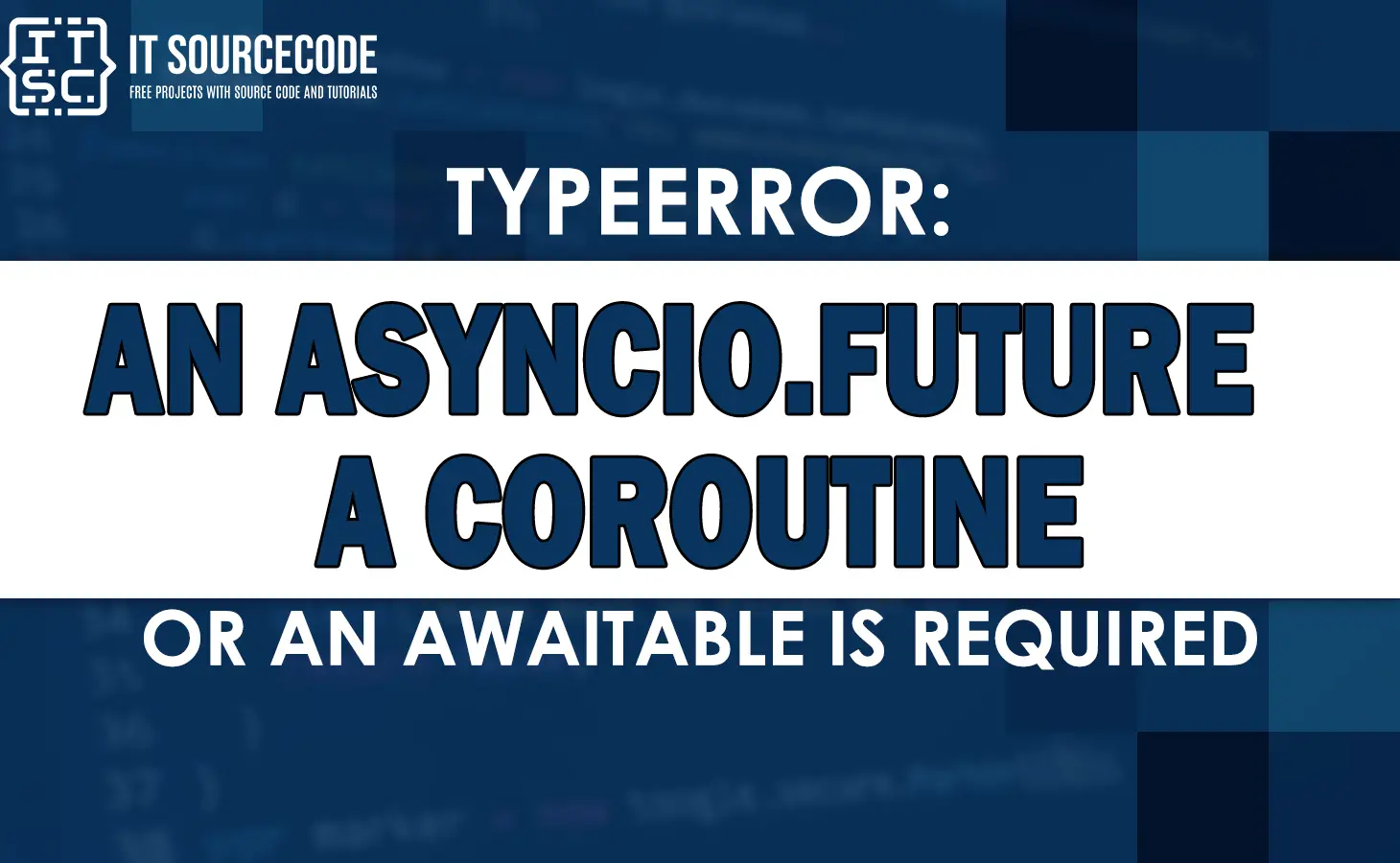If you are running a Python program, you may encounter one of the error message “TypeError: An asyncio.Future, a coroutine, or an awaitable is required“. This error message is usually common when working with asynchronous programming and is usually caused by a few common mistakes.
In this article, we will explain what this error message means, why it occurs, and how to fix it.
What is Asynchronous Programming?
Before we proceed into the causes of the “TypeError: An asyncio.Future, a coroutine, or an awaitable is required” error message, let’s briefly review what asynchronous programming is in Python.
Asynchronous programming is a programming model that allows for non-blocking, concurrent execution of multiple tasks or functions.
It means that while one function is waiting for a response from a slow I/O operation, another function can continue to run, improving the overall performance of the program.
Also you might interested to read the other python error resolve:
What is asyncio?
Asyncio is a library in Python that provides a set of tools for writing asynchronous code using coroutines, tasks, and event loops. It is built-in the Python standard library since version 3.4, and it is used extensively in Python web frameworks such as Flask and Django.
Why this error message occur?
The “TypeError: An asyncio.Future, a coroutine, or an awaitable is required” error message usually occurs because you are trying to use a function or method that expects an asynchronous object, such as a coroutine or a future, yet you are passing the regular synchronous object instead.
This will happen if you are able to forget to mark a function as asynchronous using the async keyword, or if you’re trying to use a synchronous function in an asynchronous context.
How to solve the “TypeError: An asyncio.Future, a coroutine or an awaitable is required?
To solve the “TypeError: An asyncio.Future, a coroutine, or an awaitable is required” error message, you need to make sure that you are using asynchronous objects, such as coroutines or futures, in the appropriate contexts. Here are solutions to help you to prevent this error:
Solution 1: Mark Your Functions as Asynchronous
To use a function as an asynchronous coroutine, you should mark it as asynchronous using the async keyword.
Here is an example of how to mark my_function_code() as asynchronous:
async def my_function_code():
# Do some asynchronous work
pass
Solution 2: Use Asynchronous Functions in Asynchronous Contexts
To prevent this error message, you need to make sure that you are using asynchronous functions in asynchronous contexts.
Here’s an example on how to use asynchronous functions in an asynchronous context:
import asyncio
async def my_coroutine():
print("Starting coroutine")
await asyncio.sleep(1)
print("Coroutine finished")
async def main():
print("Starting main")
await my_coroutine()
print("Main finished")
asyncio.run(main())
In this example, we specify an asynchronous function called my_coroutine() that waits for 1 second and then prints some messages. We also specify an asynchronous function called main() that calls my_coroutine() and prints some messages before and after it.
To run these asynchronous functions in an asynchronous context, we use the asyncio.run() function to execute the main() function.
This function manages in creating and running an event loop, which is necessary for running asynchronous functions.
If we run this code, the output will be like this:
C:\Users\Dell\PycharmProjects\pythonProject\venv\Scripts\python.exe C:\Users\Dell\PycharmProjects\pythonProject\main.pyStarting main
Starting coroutine
Coroutine finished
Main finished
Solution 3: Use Await to Wait for Asynchronous Operations
If you call an asynchronous function, you should use the await keyword to wait for the function to complete. This allows other tasks to run in the meantime and makes sure that the asynchronous function is executed properly.
Here is an example on how to use the await keyword:
async def main():
task = asyncio.create_task(my_coroutine())
await taskIn this example, we use the asyncio.create_task() function to create a task for the my_coroutine() coroutine, and then use the await keyword to wait for the task to complete.
Solution 4: Check the Documentation
If the error still persists, you should check the documentation for the function or method that is causing the error. The documentation will tell you what types of objects the function expects as arguments and what types of objects it returns.
Solution 5: Use a Debugger
If you are still unable to identify the cause of the error, you can use a debugger to step through your code and see what is happening at each step. This can help you to identify the exact line of code that is causing the error and determine what objects are being passed to the function.
Conclusion
The “TypeError: An asyncio.Future, a coroutine, or an awaitable is required” error message can be frustrating, yet it is usually easy to solve once you understand what is causing the error. Make sure that you are using asynchronous objects in asynchronous contexts.
Marking your functions as asynchronous, and using the await keyword to wait for asynchronous operations, you can prevent this error and write efficient, high-performance asynchronous code in Python.
FAQs
You can mark a function as asynchronous through using the async keyword before the def keyword.
await keyword in Python?The await keyword is used to wait for an asynchronous operation to complete before continuing with the rest of the program.
A coroutine in Python is a special type of function that can be paused and resumed. It is used extensively in asynchronous programming to perform non-blocking I/O operations.
No, asyncio is a Python library and can only be used with Python.

